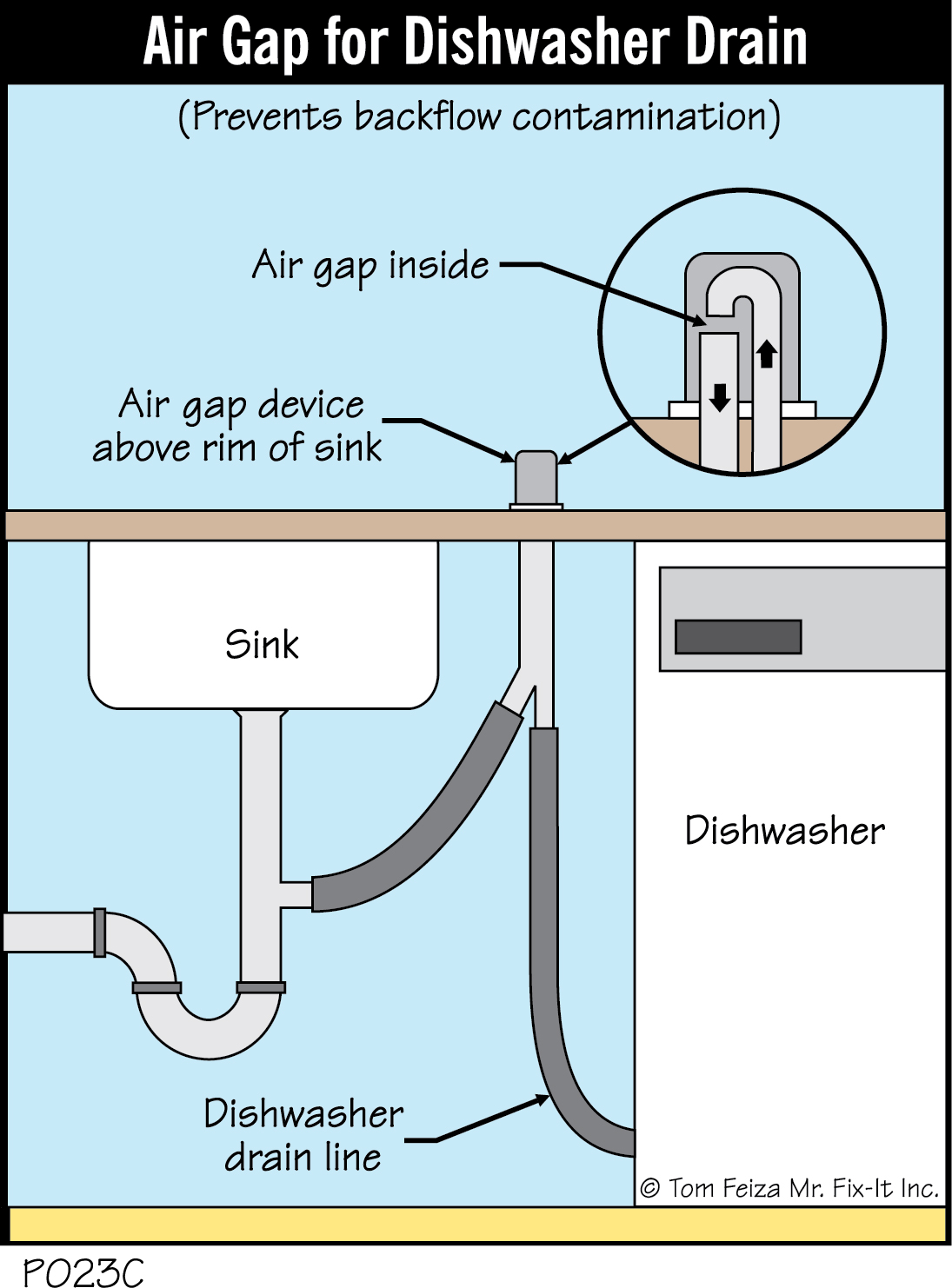When you run your dishwasher and water suddenly gushes out of that little chrome cylinder on your countertop, it’s alarming. But don’t panic—this is actually your dishwasher’s air gap doing its job by alerting you to a problem.
What Is a Dishwasher Air Gap?
The air gap is a small device (usually chrome or stainless steel) mounted on your countertop or sink. Its purpose is simple but critical: it prevents dirty water from your sink drain from flowing backward into your dishwasher and contaminating your clean dishes.
The air gap creates a physical break (or “gap of air”) in the dishwasher drain line. Water from your dishwasher flows up through the air gap, then down into your sink’s drain line. If dirty water tries to flow backward, it will spill out of the air gap onto your counter instead of into your dishwasher.
Why Water Sprays Out of the Air Gap
When water floods or sprays out of the air gap while your dishwasher is running, it means water cannot properly flow through the drain system. The most common causes are:
1. Clogged Drain Line Below the Sink
The drain line that connects the air gap to your garbage disposal or sink drain is blocked. Food particles, grease, or soap scum have built up and restricted water flow.
2. Kinked Drain Hose
The flexible hose running from the air gap down to the drain has a kink or sharp bend that’s blocking water flow.
3. Debris in the Air Gap Itself
Food particles, mineral deposits, or other debris have accumulated inside the air gap cap, blocking the opening.
4. Clogged Garbage Disposal
If your dishwasher drains through a garbage disposal, a blockage in the disposal will prevent water from draining properly.
5. Main Drain Line Issues
Less commonly, your main sink drain line could be partially clogged, causing drainage problems throughout the system.
How to Fix It: Step-by-Step
What You’ll Need:
- Small brush or old toothbrush
- Bucket or towel
- Plumber’s snake or wire hanger (if needed)
- Flashlight
Step 1: Clean the Air Gap Cap
- Twist off the chrome cap at the top of the air gap (it usually unscrews counterclockwise)
- Remove the plastic disc underneath
- Look inside the air gap for debris—you’ll see two openings
- Use a small brush or toothbrush to clean out any visible debris
- Flush with water from a cup to clear it out
- Replace the plastic disc and chrome cap
Step 2: Check the Drain Hose for Kinks
- Open the cabinet under your sink
- Locate the hose running from the air gap down to the drain or garbage disposal
- Look for any sharp bends, kinks, or pinched sections
- Straighten out any kinks you find
- Make sure the hose isn’t compressed between objects
Step 3: Clear the Drain Line
- Disconnect the drain hose from the garbage disposal or drain tailpiece (place a bucket underneath)
- Check for clogs at the connection point
- If you see a blockage, use a plumber’s snake or straightened wire hanger to clear it
- Flush the hose with water to ensure it’s clear
- Reconnect securely
Step 4: Check the Garbage Disposal
If your dishwasher drains through a garbage disposal:
- Run the disposal for 30 seconds with cold water
- If you just installed a new disposal, check that the knockout plug was removed from the dishwasher inlet
- Look inside the disposal (with power OFF) for blockages
Step 5: Test the System
- Reconnect everything
- Run a short dishwasher cycle
- Watch the air gap to see if water still overflows
- If it’s fixed, you should see no water or just a small amount during the drain cycle
Prevention Tips
Keep your air gap working properly:
- Clean the air gap cap every 3-6 months
- Run hot water in your sink before starting the dishwasher to clear the drain line
- Don’t pour grease down the sink drain
- Use your garbage disposal regularly with plenty of cold water
- Consider a monthly drain cleaner treatment (enzyme-based, not chemical)
When to Call a Plumber
Call a professional if:
- You’ve tried all the above steps and water still overflows
- The main drain line is clogged beyond what you can clear
- Water backs up in multiple sinks or drains
- You suspect a venting issue in your drain system
- The air gap assembly is cracked or damaged
Do I Really Need an Air Gap?
Some areas don’t require air gaps by code and use a high loop in the dishwasher drain hose instead. However, air gaps provide better protection against contamination. Check your local plumbing code before removing one.
If you live in California or many other states, the air gap is required by code and must remain in place.
Bottom Line
Water spraying from your dishwasher air gap is almost always caused by a simple clog in the drain system. Start with the easiest fixes—cleaning the air gap cap and checking for kinked hoses—before moving to more complex solutions. In most cases, you can resolve this yourself in 5-10 minutes without calling a plumber.


